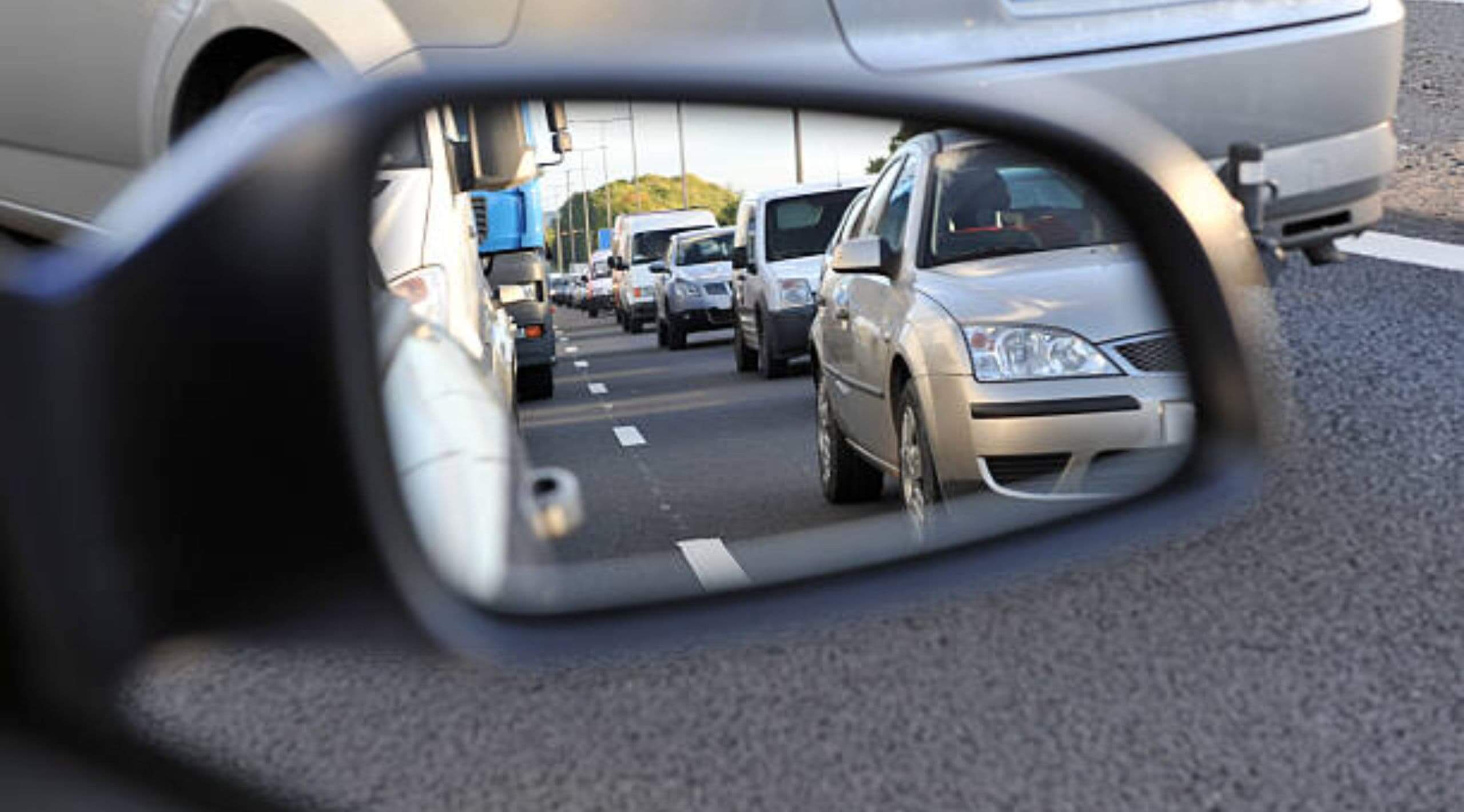The Importance of Side Mirrors for Safe Driving
Side mirrors, often referred to as side-view mirrors or wing mirrors, play a pivotal role in ensuring road safety. They provide drivers with a clear view of their blind spots, allowing them to make informed decisions when changing lanes or overtaking. Without these mirrors, drivers would be at a higher risk of collisions, especially with vehicles approaching from behind or the side. An unobstructed mirror view is essential for gauging the distance and speed of other vehicles, ensuring that maneuvers are executed safely.
Understanding the Legal Requirements for Side Mirrors
Many wonder, “Is it illegal to drive without side mirrors?” The answer varies depending on the jurisdiction. In most places, driving without a side mirror is not just a safety concern but also a legal one. Motor vehicle regulations often stipulate the need for vehicles to have at least one side mirror, typically on the driver’s side. However, the specifics can differ, with some states requiring both left and right-side mirrors, while others may only mandate one.
State-by-State Analysis: Side Mirror Laws in the United States
Side mirror regulations vary significantly across the United States, with each state having its distinct set of rules. A closer look at some of these states reveals:
- Maryland: This state has precise guidelines concerning side mirror requirements, ensuring drivers have a clear view of their surroundings.
- Louisiana: Similar to Maryland, Louisiana emphasizes specific side mirror regulations to promote road safety.
- Texas: Texas also has its set of guidelines, focusing on the positioning and clarity of side mirrors to aid drivers.
- New York: The Empire State places a strong emphasis on ensuring drivers have an unobstructed view through their side mirrors, ensuring maximum visibility.
- Florida: Like New York, Florida’s laws stress the importance of an unobstructed view, ensuring drivers can see their surroundings clearly.
- Vermont: Vermont’s laws are unique, with specific stipulations that might differ from the more common regulations found in other states.
- Oklahoma: The Sooner State also has its distinct set of rules, emphasizing the importance of side mirrors for safety.
- New Jersey: In Garden State, the law mandates that vehicles must have at least one side mirror, typically on the driver’s side. This ensures that the driver can see the road behind them, especially when the rear window is obstructed.
- Maine: Maine’s regulations stipulate that if the vehicle’s rear window is obstructed, then two side mirrors are required. This ensures that drivers have a clear view of both sides of their vehicle.
- Kansas: In the Sunflower State, vehicles are required to have a mirror that reflects the driver’s view of the highway for a distance of at least 200 feet to the rear of the vehicle. This can be achieved with a rearview mirror or side mirrors.
Given the variations in regulations, it’s imperative for drivers to acquaint themselves with mirror laws specific to their state. Additionally, if planning a cross-country trip or relocating, understanding the laws of other states becomes equally crucial.
Is It Illegal to Drive Without Side Mirrors? Exploring the Legalities
The question, “Is it illegal to drive without side mirrors?” frequently arises among drivers. The majority of states in the U.S. deem it illegal, emphasizing the critical role side mirrors play in ensuring road safety. These mirrors provide essential visibility, helping drivers make informed decisions on the road. The absence of them not only compromises safety but also exposes drivers to potential legal consequences. The specifics, however, can differ. For example, while some states mandate both passenger and driver’s side mirrors, others may only require the driver’s side mirror. It’s essential for drivers to be aware of their state’s specific regulations to avoid legal complications.
Consequences of Driving Without Side Mirrors: Fines and Penalties
The repercussions of driving without side mirrors are not to be taken lightly. Depending on the state, the consequences can range from minor to severe. Law enforcement officers, including police officers and state troopers, are vigilant about this aspect of vehicle compliance. A missing mirror can easily catch their attention during routine patrols or checkpoints. In certain states, a first-time offense might result in a mere warning, serving as a reminder to the driver. However, repeated offenses or driving in states with stricter regulations can lead to substantial fines. In more severe cases, drivers might even accrue points on their licenses, which can impact their driving record and insurance premiums.
Exceptions and Special Cases: Navigating Side Mirror Laws
While the laws surrounding side mirrors are clear-cut in most scenarios, there are instances where exceptions come into play. Classic cars or certain unique vehicle designs might be exempt from modern side mirror regulations, given their age or specific build. Another common scenario is when a vehicle’s side mirror gets damaged due to unforeseen circumstances, like an accident. If the driver is actively heading to a repair shop to address the issue, some states might show leniency, understanding the temporary nature of the situation. Nevertheless, it’s paramount for drivers to be proactive in such cases. Consulting local regulations or seeking legal advice can provide clarity and ensure that one remains on the right side of the law.
Tips for Maintaining and Repairing Side Mirrors to Ensure Compliance
Maintaining your vehicle’s side mirrors in pristine condition is not only a matter of legal compliance but also a significant safety measure. Regular inspections can help identify any wear, damage, or misalignment early on. If you spot a crack or any damage, it’s essential to address it immediately. Driving with a broken mirror isn’t just a potential legal violation; it’s a hazard that can compromise your safety and that of others on the road. Fortunately, replacement mirrors are widely accessible, and with the right tools and perhaps a tutorial or two, many drivers can handle the installation themselves. Prioritize your mirrors’ upkeep as you would any other vital component of your vehicle.
Common Misconceptions About Side Mirror Laws Debunked
When it comes to side mirror laws, misinformation can be as dangerous as negligence. A prevalent myth is the belief that having just one side mirror is universally acceptable. However, the reality is that while some states might permit this, many others mandate both side mirrors for optimal safety. Another widespread misconception is the over-reliance on rearview mirrors. While they play a crucial role in providing a direct view behind the vehicle, they cannot replicate the broader field of vision side mirrors offer, especially concerning blind spots. It’s essential to differentiate between fact and fiction to ensure both safety and legal compliance.
The Role of Rear View Mirrors in Supplementing Side Mirror Usage
Rear-view mirrors serve as a vital component in a vehicle’s safety apparatus. They offer drivers a clear, direct view of what’s behind them, aiding in maneuvers like reversing or assessing the distance of vehicles approaching from the rear. However, their utility has limits. They cannot capture the blind spots that side mirrors can, especially those areas immediately to the left and right of the vehicle. This limitation underscores the importance of having both rearview and side mirrors in good working condition. Together, they provide a panoramic view, ensuring drivers have all the visual information they need to make safe decisions on the road.
Enhancing Road Safety: Promoting Proper Side Mirror Usage and Adjustments
The significance of side mirrors in road safety cannot be overstated. However, merely having them isn’t enough; their proper adjustment is paramount. When correctly positioned, side mirrors drastically reduce blind spots, offering a broader view of adjacent lanes and the road behind. This comprehensive view aids in making informed decisions, whether it’s changing lanes or detecting a fast-approaching vehicle. Drivers should make it a routine to check and adjust their mirrors before embarking on any journey. This simple yet vital practice can be the difference between a safe trip and a potential road mishap.
Final Thoughts
The essence of side mirrors transcends legal obligations. It’s a matter of life and safety. Regardless of whether you’re navigating the bustling streets of Massachusetts, the scenic routes of Mississippi, or the highways of Alabama, being well-informed about your state’s mirror regulations is imperative. But beyond the legalities and potential fines lies a more pressing matter: the well-being of every road user. Properly maintained and adjusted side mirrors contribute significantly to road safety, ensuring that drivers can make informed decisions based on a clear and comprehensive view of their surroundings. Always prioritize safety over convenience.

